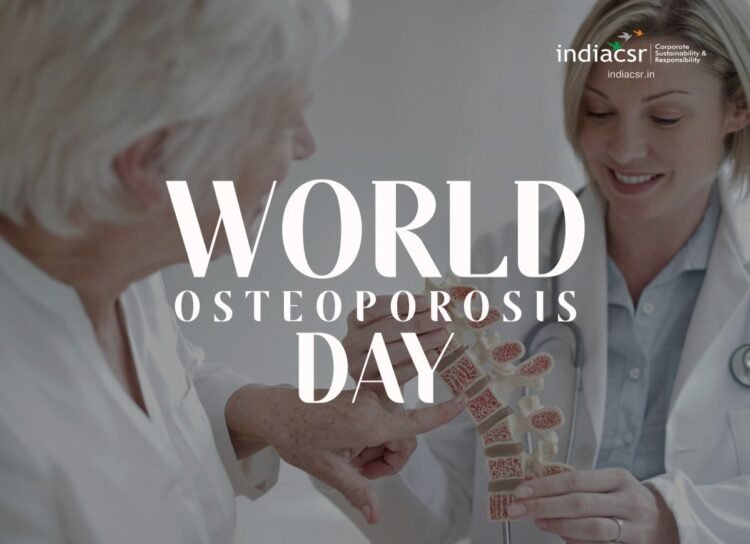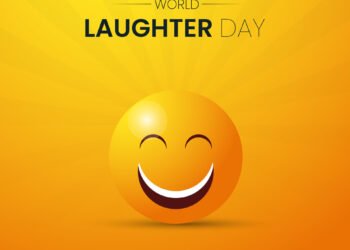World Osteoporosis Day: A Day to Raise Awareness and Take Action for Bone Health
World Osteoporosis Day is observed annually on October 20th to raise awareness of osteoporosis and metabolic bone disease. Osteoporosis is a condition in which the bones become weak and brittle, making them more likely to break. It is a major public health problem, affecting over 200 million people worldwide.
World Osteoporosis Day (WOD) is an annual event that aims to raise awareness of the prevention, diagnosis, and treatment of osteoporosis and related musculoskeletal diseases. WOD is organized by the International Osteoporosis Foundation (IOF), a global non-profit organization that works to promote bone health and fight osteoporosis worldwide.
What is Osteoporosis?
Osteoporosis is a disease that weakens the bones, making them more likely to break. It is often called a “silent disease” because there are usually no symptoms until a bone breaks. Osteoporosis can affect any bone in the body, but it is most common in the hips, spine, and wrists.
The Theme and Message of WOD 2023
The theme of WOD 2023 is “Build Better Bones”. The message of WOD 2023 is to encourage people to take action for their bone health by following a bone-healthy lifestyle. A bone-healthy lifestyle includes:
- Regular weight-bearing and muscle-strengthening exercise
- A nutritious bone-healthy diet and adequate vitamin D
- No smoking and avoiding excessive alcohol intake
- Early awareness of risk factors and seeking testing and treatment if needed
The IOF has developed various resources and tools to help people learn more about osteoporosis and how to build better bones. These include posters, infographics, videos, social media banners, a quiz, a risk check, a global patient charter, patient stories, and a new platform for patients and their caregivers. These resources can be accessed from the official website of WOD.
The Importance and Impact of WOD
WOD is an important initiative that aims to make a positive impact on the lives of people affected by osteoporosis and related musculoskeletal diseases. WOD helps to:
- Educate the public and patients about osteoporosis and its prevention, diagnosis, and treatment
- Empower people to take charge of their bone health and seek medical attention if needed
- Engage with healthcare professionals and health authorities to improve patient care and access to diagnosis and treatment
- Elevate the profile of osteoporosis as a serious public health issue that deserves more attention and resources
WOD also provides an opportunity for people to join a global community of supporters who share their stories, experiences, and opinions about osteoporosis. By voicing their concerns collectively, they can help to make fracture prevention a global health priority.
Risk Factors for Osteoporosis
There are a number of risk factors for osteoporosis, including:
- Age: Osteoporosis is more common in older adults, especially women after menopause.
- Sex: Women are more likely to develop osteoporosis than men.
- Family history: Osteoporosis runs in families. If your parents or grandparents have osteoporosis, you are at increased risk.
- Race: White and Asian women are at higher risk for osteoporosis than Black and Hispanic women.
- Medical conditions: Certain medical conditions, such as rheumatoid arthritis, celiac disease, and hyperthyroidism, can increase the risk of osteoporosis.
- Medications: Certain medications, such as corticosteroids and proton pump inhibitors, can weaken bones.
- Lifestyle factors: Smoking, excessive alcohol consumption, and lack of exercise can also increase the risk of osteoporosis.
Symptoms of Osteoporosis
Osteoporosis often does not cause any symptoms until a bone breaks. However, some people may experience back pain, loss of height, and a stooped posture.
Preventing Osteoporosis
There are a number of things you can do to prevent osteoporosis, including:
- Eat a healthy diet: Make sure to eat plenty of calcium and vitamin D. Calcium is essential for building strong bones, and vitamin D helps the body absorb calcium. Good sources of calcium include dairy products, leafy green vegetables, and fortified foods. Good sources of vitamin D include sunlight, fatty fish, and fortified foods.
- Get regular exercise: Exercise helps to build and maintain strong bones. Aim for at least 30 minutes of moderate-intensity exercise most days of the week.
- Avoid smoking and excessive alcohol consumption: Smoking and excessive alcohol consumption can weaken bones.
- Get enough sleep: Sleep is important for bone health. Aim for 7-8 hours of sleep per night.
Treating Osteoporosis
If you have osteoporosis, there are a number of treatments available to help strengthen your bones and reduce your risk of fractures. Treatment options may include medications, such as bisphosphonates and denosumab, and lifestyle changes, such as diet and exercise.
Conclusion
World Osteoporosis Day is a day to raise awareness and take action for bone health. By following the theme and message of WOD 2023, people can build better bones and reduce their risk of osteoporosis and fractures. By supporting the campaign and signing the global patient charter, people can also show their commitment to improving the lives of people with osteoporosis and related musculoskeletal diseases. World Osteoporosis Day is a day to celebrate bone health and fight osteoporosis together.
Also Read: World Osteoporosis Day 2023: Date, History, Significance, Celebrations and Important Facts



















